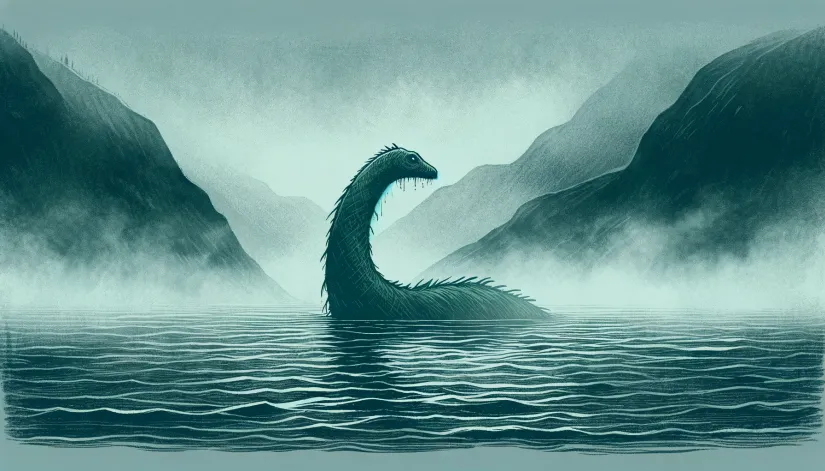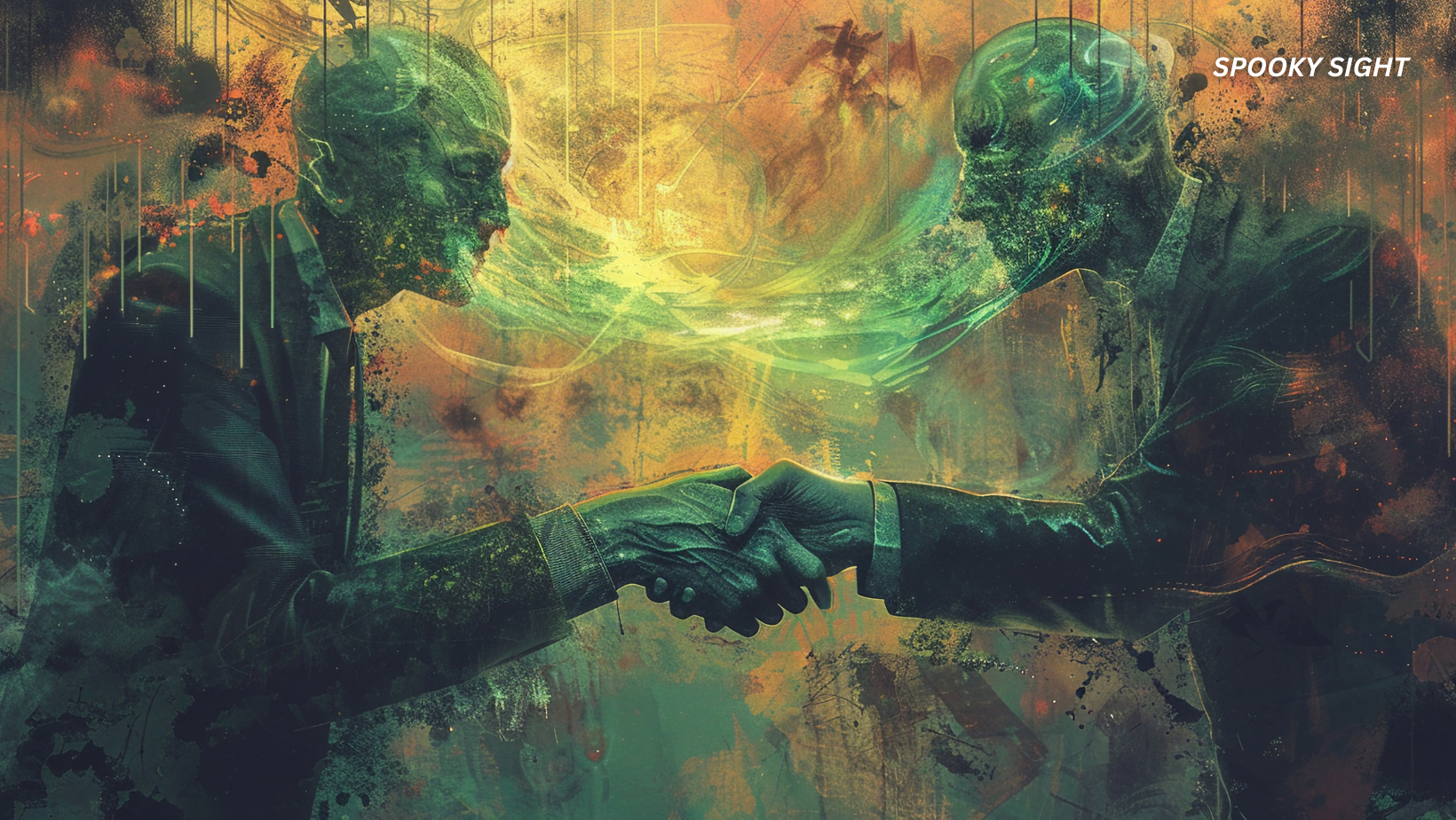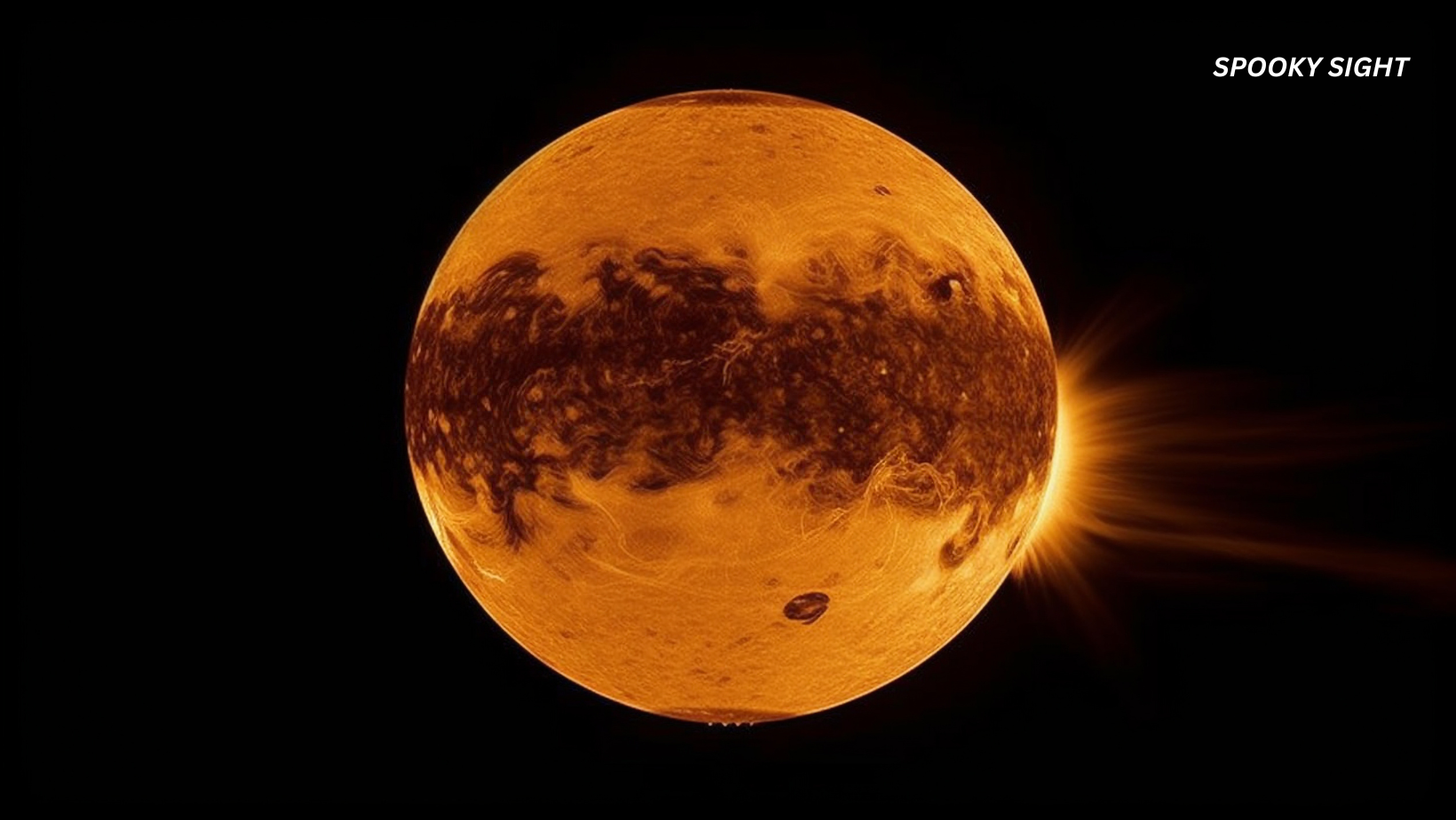The Loch Ness Monster (Nessie) is an alleged cryptid, which many believe lives in the deep and cold Loch Ness Lake (Scotland).
Interestingly, the earliest accounts of this mysterious water monster date back over 1,500 years. However, despite the many attempts to capture it (or at least find unequivocal evidence of its existence), the monster has eluded his hunters.
In this article:
Where Is the Loch Ness Lake?
Loch Ness is located in the Scottish Highlands of Scotland, United Kingdom. It’s not just any freshwater lake—it’s one of the largest and most famous in the country.
The lake (or “loch” as it’s called in Scotland) stretches about 23 miles (37 kilometers) southwest of the city of Inverness (the largest city and the cultural capital of the Highlands).
Getting to Loch Ness is a breeze. The easiest way is by road—just hop on the A82 highway, which hugs the loch’s western shore. It’s a stunning 30-40 minute drive with views that’ll pull you over for pics.
If you’re going green (or just love public transit), you can catch a bus from Inverness to either Drumnadrochit, Fort Augustus, or Invermoriston. The bus ride typically takes about 45 minutes to an hour.
Loch Ness is a glacial lake within the Great Glen (a massive geological fault line across the Highlands). It formed around 10,000 years ago, at the end of the last Ice Age.
As the glaciers melted, they carved out deep valleys—known as glacial troughs—which then filled with water and created the lochs that pepper the Highlands.
Loch Ness is also a key part of the Caledonian Canal (an engineering marvel completed in 1822 by Thomas Telford). The canal links different waterways across Scotland, with Loch Ness playing a crucial role in this system.
With an average depth of around 433 feet (132 meters) and a max depth hitting 745 feet (227 meters), Loch Ness is the second deepest loch in Scotland (just behind Loch Morar, which might be home to its own cryptid—Morag).
The sheer depth of the loch (especially near the shoreline) is one reason why the underwater flora is so sparse. Add to that the seiches—surface oscillations caused by differential heating and other factors—that create noticeable rises and falls in water levels, making it tough for plants to settle in.
But if plants can’t thrive here, it doesn’t mean that something else can’t…

What Does the Loch Ness Monster Look Like?
Loch Ness Monster’s descriptions vary. A lot. Primarily due to the lack of definitive evidence. However, some general consensus is based on eyewitness accounts and popular depictions.
General Appearance
According to those who allegedly saw the creature, Nessie is quite large and has a very long neck. It kind of resembles a plesiosaur (a prehistoric marine reptile that lived roughly 210 million to 66 million years ago).
Related: The Legendary Dobhar-chú Cryptid: Ancient Beast or Overgrown Otter?
The most common description is that of a beast with a small head and an exceptionally long neck (sometimes as long as 10 feet). Its body has one or more dark humps protruding from the water.
Size and Shape
In terms of Nessie’s size, the reports are, once again, all over the map.
Some presumably witnesses describe a beast that’s around 25 feet long. Others claim it could be as long as 40 feet.
As for its height—particularly when that famous long neck stretches out of the water—estimates suggest the Loch Ness Monster could easily reach 4 to 5 feet above the surface.
So, based on these estimations alone, if the cryptid exists, it would be one of the most enormous creatures inhabiting a freshwater lake.
Comparison table between similar water cryptids:
| Cryptid | Habitat | Location | Physical Traits | Alleged Sightings | Characteristics |
|---|---|---|---|---|---|
| Loch Ness Monster | Loch Ness | Scottish Highlands, Scotland | Large, long neck, dark humps, possibly 20-40 ft long | 565 A.D., 1933, 1934, 1952, 1960, 1972, 1975, 2007, 2011, 2014, 2016, 2017, 2018, 2020 | Most famous water cryptid; global icon; subject of many hoaxes |
| Morag | Loch Morar | Scottish Highlands, Scotland | Similar to Nessie; long body, 20-30 ft; dark color | 1887, 1948, 1969, 1970, 1971 | Less known than Nessie; described as aggressive |
| Ogopogo | Okanagan Lake | British Columbia, Canada | Long, serpentine body, multi-humped; 40-50 ft long | 1872, 1926, 1947, 1968, 1989, 2000, 2011 | Often considered Canada’s Nessie; prominent in local folklore |
| Champ | Lake Champlain | New York/Vermont, USA; Quebec, Canada | Serpentine, up to 20 ft long; dark, with humps | 1609, 1819, 1873, 1883, 1945, 1977, 1981, 1993, 2003, 2005 | Native American legend; several recorded sightings |
| Lagarfljót Worm | Lagarfljót Lake | Iceland | Serpentine, with many humps, estimated 40 ft long | 1345, 1589, 1860, 1963, 1983, 1998, 2012 | Associated with Icelandic folklore; reportedly venomous |
The Legend of the Loch Ness Monster
Believe it or not, the legend of a mysterious creature in the Loch Ness area dates back to around 565 A.D.
One of the earliest recorded encounters is mentioned in the “Life of St. Columba.” In this story, the saint has allegedly confronted the unusual water beast in the nearby River Ness—a river flowing out of Loch Ness.
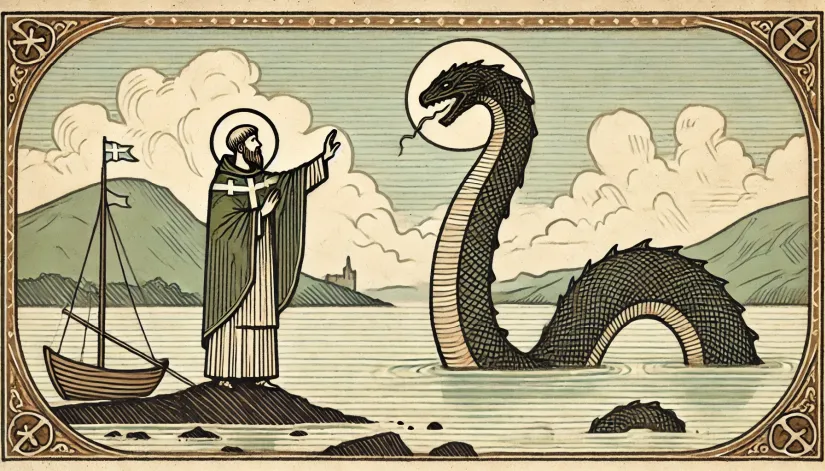
St. Columba’s Encounter (565 A.D.)
“Life of St. Columba” is a biography written by Adomnán, the ninth abbot of Iona, around 700 A.D. In his work, Adomnán documented the life of St. Columba, an Irish missionary who spread Christianity in Scotland during the 6th century.
But what’s so interesting about this early report? Well, according to the account, the abovementioned incident occurred in 565 A.D. while St. Columba was traveling through the Scottish Highlands.
One day, St. Columba and his companions were near the River Ness. While preaching, they encountered a group of locals burying a man.
When St. Columba asked what happened, the fishermen told him the man was attacked by a “water beast.” The creature dragged the man under, and despite their attempts to save him, they were too late.
Related:
- 16 Fascinating Facts About the Loch Ness Monster
- Is the Grootslang Real? Discover The Legendary Beast of Africa
- Top 11 Most Bizarre and Terrifying Native American Cryptids
Hearing this, St. Columba decided to intervene. He ordered one of his followers, Luigne Moccu Min, to swim across the river. As Luigne swam, the creature surfaced and approached the disciple.
St. Columba raised his hand, made the sign of the cross, and commanded the beast to “go no further” and leave the man unharmed. According to the story, the creature immediately stopped. As if pulled back by invisible ropes. And fled.
This dramatic confrontation is often cited as the earliest recorded sighting of what some believe to be the Loch Ness Monster.
However, skeptics argue that the tale could simply be a piece of hagiography—a story meant to illustrate St. Columba’s holiness and miraculous powers.
The Spicer Sighting (1933)
The modern fixation with the Loch Ness Monster didn’t really happen until a road was built along Loch Ness in 1933.
What could explain why there are no other documented sightings or reports from 565 to 1933? Maybe the locals didn’t believe in a mysterious creature hiding underneath the Loch.
However, on July 22, 1933, George Spicer and his wife were driving along the newly built road when they had a close encounter of the cryptid kind.
What happened? The Spicer family reported seeing a “dragon or prehistoric monster,” crossing the road in front of them, heading toward the loch. This “dragon” had a long, wavy neck and a large body but no visible limbs.
The Spicer sighting picked up a lot of attention (especially from local and national media). In many ways, it’s the modern encounter that ignited the whole Loch Ness frenzy.
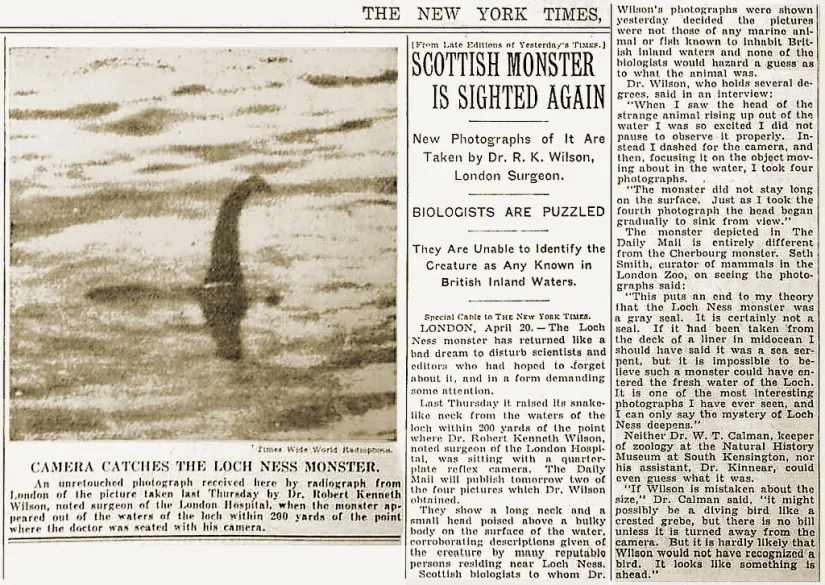
The Infamous Surgeon’s Photograph (1934)
Arguably, Nessie’s most iconic image, the Surgeon’s Photograph, was snapped in 1934 by Robert Kenneth Wilson (a gynecologist from London). The photo, showing a creature with a long neck emerging from the waters of Loch Ness, was published in the Daily Mail on April 21, 1934.
For decades, the Surgeon’s Photograph was seen as one of the strongest pieces of evidence supporting the Loch Ness Monster’s existence.
The Dinsdale Film (1960)
In April 1960, an aeronautical engineer, Tim Dinsdale, captured another alleged encounter with the monster. This time on video.
His film shows a large, dark object moving across Loch Ness, creating a visible wake. According to Dinsdale, the object had “a distinct hump,” and it appeared to move at “a significant speed.”
The film was taken seriously enough to be analyzed by the Joint Air Reconnaissance Intelligence Center (JARIC) of the British Royal Air Force.
Their analysis suggested that the object was likely a living creature. Though they couldn’t definitively identify it.
Loch Ness Investigation Bureau (1962-1972)
The Loch Ness Investigation Bureau (LNIB) was founded in 1962 by Norman Collins, David James, and Peter Scott. Its role? To scientifically investigate the Loch Ness cryptid.
The LNIB spent a lot of money organizing annual expeditions to the loch, setting up observation points with cameras and binoculars, using surface and underwater photography, sonar technology, and even submersibles. All just to capture some definitive evidence.
What they captured after a decade of research. Zero evidence. Well, that’s not entirely true. They did record some sonar readings and photographs of unexplained objects. But nothing conclusive was ever found.
The LNIB disbanded in 1972.
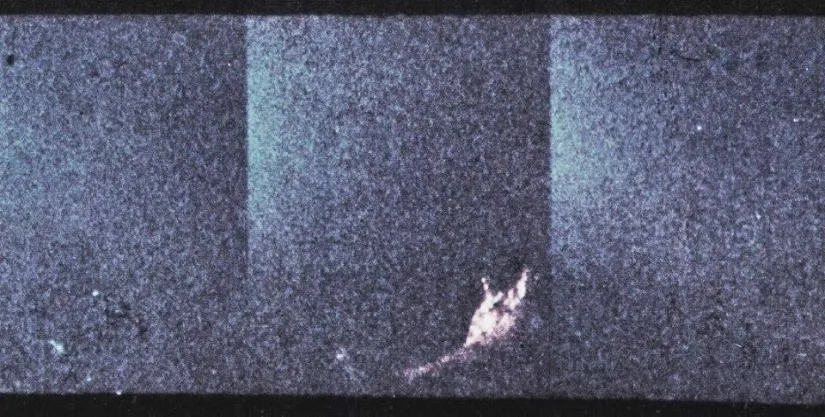
Rines Underwater Photographs (1975)
Three years after LNIB ceased operations at the Loch Ness Lake, another alleged encounter. This time from an American lawyer and inventor, Robert H. Rines, who in 1975 captured several underwater photographs.
Using sonar and submerged cameras, Rines snapped what appeared to be a large, flipper-like appendage and a body.
Of course, the media picked up on the story almost immediately. The images were shown on TV. “Experts” were interviewed. However, the photographs were so grainy and lacked clarity that no one could identify the mysterious object.
Rines later used computer enhancements to clarify the images. But his “enhancements” received even more skepticism. Some argued that Rines just introduced artifacts (or distortions) not present in the original images.
Operation Deepscan (1987)
Interest in the Loch Ness Monster had waned somewhat by the mid-1980s. Still, in 1987, it was revitalized with the launch of Operation Deepscan. It was one of the most ambitious searches to date.
24 boats equipped with state-of-the-art sonar equipment swept the entire length of Loch Ness over three days in October 1987. The goal? To detect any large, unidentified objects beneath the lake’s deep waters.
During the sweep, the sonar did indeed pick up several large, moving objects at depths of up to 600 feet (approximately 180 meters). These readings showed objects significantly larger than any known fish species in the loch.
But it was a long way from picking up large objects to identifying them. They could be large fish, debris, or even geological formations. There was no way of knowing for sure.
Ultimately, Operation Deepscan was just another bust.
BBC Investigation (2003)
In 2003, the BBC launched another massive investigation of Loch Ness. This time, with even more modern sonar equipment and satellite navigation technology.
The BBC team concluded that there was no evidence of any large, unknown creature in the depths. According to them, if a creature as large as Nessie existed in the loch, their sophisticated equipment would likely have detected it.
DNA Survey (2018)
In 2018, a team led by Professor Neil Gemmell from the University of Otago in New Zealand conducted a DNA survey of Loch Ness. Their goal was to catalog all living species in the loch by analyzing environmental DNA (eDNA) from water samples.
The study was published one year later, in 2019. As expected, the team found no evidence of any large, unknown creatures. However, the survey did reveal significant amounts of eel DNA, leading some cryptozoologists to speculate that Nessie could be, in fact, a giant eel.
Largest Search in 50 Years (2023)
In August 2023, the Loch Ness Centre organized the most extensive search for the Loch Ness Monster in over 50 years.
Hundreds of volunteers from dozens of different countries. Each carrying expensive equipment—drones, infrared cameras, hydrophones, Light Detection and Ranging (LIDAR) scanning technology.
But again, despite the high-tech tools and enthusiastic participation, the search yielded no conclusive evidence of Nessie.
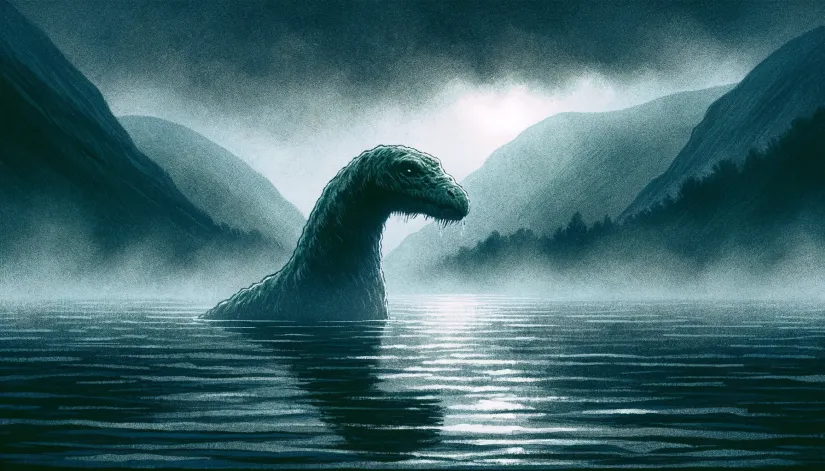
Scientific Explanations and Theories
Over the years, experts have proposed countless scientific explanations and theories for the Loch Ness Monster sightings. Here are some of the most discussed ones:
The Plesiosaur Theory
One of the most popular hypotheses is that Nessie might be a plesiosaur (one of those prehistoric reptiles that lived during the Mesozoic Era).
Why a plesiosaur? Because all witness’s depictions seem to suggest this. The long neck. The broad body. The flippers. All are strikingly similar to most descriptions of the Loch Ness Monster.
Those who believe in this idea suggest that a small group of plesiosaurs somehow survived the mass extinction that wiped out the dinosaurs and continued to live in the deep, cold waters of Loch Ness.
However, we don’t think it’s possible. For one, the water in Loch Ness is far too cold for a cold-blooded reptile. Additionally, plesiosaurs were marine creatures that needed saltwater. The Loch Ness is a freshwater lake.
Not to mention that no fossil evidence has been found to suggest that plesiosaurs survived into modern times.
A Giant Eel?
Another theory is that Nessie could be a giant eel. This idea gained considerable traction after Gemmell and his team’s 2018 environmental DNA (eDNA) survey.
As mentioned above, the study found significant amounts of eel DNA in the loch. These findings led some scientists to speculate that Nessie could be an oversized European eel.
European eels can grow up to 5 feet. Some exceptionally large specimens could reach 10 to 20 feet. Giant eels like this could easily be mistaken for an aquatic monster.
Related: The Canvey Island Monster: Facts, Sightings, and Theories
But there’s an issue with this theory, too. While eel DNA was confirmed in the lake, nothing indicates how large these eels are. Yes, eels may be common in the loch. Whether they are large enough to be mistaken for Nessie remains an open question.
Lake Sturgeon
Another explanation links the Loch Ness Monster sightings with lake sturgeons. These ancient fish have a distinctly prehistoric look. Their large bodies are covered in bony plates (called scutes) that could easily be mistaken for humps—often reported in presumable encounters with the monster.
On top of that, sturgeons can grow to several hundred pounds and reach lengths of up to 20 feet. A giant sturgeon with its distinctive ridged back could easily lead to reports of a “monster” swimming in the lake.
Trees and Driftwood
It’s a less exciting idea. But scientifically sound, nonetheless.
When large trees fall into the loch and become waterlogged, they can eventually resurface due to trapped gases. As these logs rise to the surface, they can take on strange shapes and appear to move. Especially when pushed by currents or wind.
In specific light and weather conditions, a resurfacing tree could easily be mistaken for a large creature emerging from the water.
Seismic Activity and Gas Emissions
Some scientists propose that seismic activity beneath Loch Ness could be responsible for the strange phenomena misinterpreted as sightings of Nessie.
The loch is in close proximity to a geological fault line. Small earthquakes could easily disturb the water’s surface, generating unusual waves or ripples.
Additionally, gas emissions from decaying organic material at the bottom of the loch could create bubbles and surface disturbances that might be mistaken for some cryptid moving underwater.
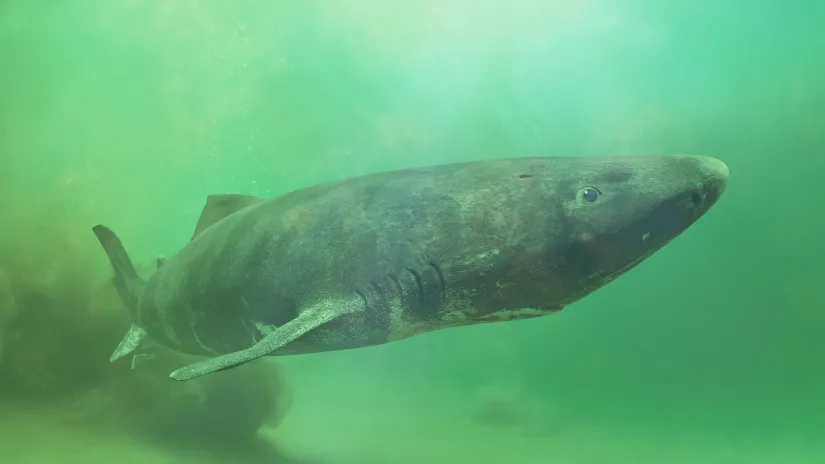
Greenland Shark
The Greenland shark theory was proposed by Jeremy Wade, the host of “River Monsters.”
Wade suggested that some sightings, particularly those describing a creature with a dorsal fin, might actually be misidentified Greenland sharks. These sharks are large, slow-moving, and capable of living in cold, deep waters.
However, this theory is controversial. Greenland sharks are typically marine animals found in the ocean. Their ability to survive long-term in the freshwater is highly questionable.
Wels Catfish
Steve Feltham (a dedicated Nessie hunter who has spent decades at Loch Ness searching for evidence of the creature) proposed another theory.
Feltham suggested that the Loch Ness Monster could be an unusually large Wels catfish, potentially introduced into the loch for sport fishing in the late 19th century.
These catfish can grow up to 16 feet long. They also have some physical characteristics (body shape) that might be mistaken for a large, serpent-like creature when seen from the surface.
While Feltham’s theory is compelling, there’s an issue. Catfish don’t like to swim close to the surface. They prefer dark water that is closer to the bottom. So, who could Wels catfish be responsible for the many alleged Nessie sightings over the years?
Notorious Hoaxes and Publicity Stunts
The Loch Ness Monster is not just about bizarre sightings and extraordinary theories. It’s also about high-profile hoaxes and publicity stunts that tarnished the myth.
Here are just a few examples:
The Marmaduke Wetherell Hoax (1934)
In December 1933, the Daily Mail newspaper commissioned Marmaduke Wetherell (a well-known big-game hunter) to investigate the Loch Ness Monster.
Wetherell, probably eager to deliver sensational news, reported finding large, mysterious footprints along the shores of Loch Ness. He claimed the footprints belonged to Nessie.
The extraordinary finding generated a lot of excitement, and the footprints were sent to the Natural History Museum in London for analysis.
However, the excitement was short-lived.
The experts quickly discovered that the imprints were not those of a prehistoric creature. Instead, they were likely made with a hippopotamus-foot umbrella stand.
When the hoax was exposed, it caused a major scandal. And Wetherell’s reputation was ruined.
The 1972 Elephant Seal Hoax
Another infamous hoax happened in August 1972 when a team of zoologists working near Foyers on the southeastern shore of Loch Ness reported finding the remains of a large animal.
The animal reportedly weighed 1.5 tonnes and had a bear-like head, scaly brown body, and claw-like fins.
However, the corpse was later identified as that of a bull elephant seal that had been shaved and placed in the loch by John Shields, an education officer at Flamingo Park Zoo in Yorkshire (now known as Flamingo Land).
Shields admitted that he had staged the hoax. He wanted to prank his colleagues who were using the sonar to search in the loch.
The incident was widely covered in the press. And it was a considerable embarrassment for those who had prematurely proclaimed the discovery as proof of Nessie’s existence.
Publicity Stunts of the 2000s
In 2003, a man named Gerald McSorely claimed to have discovered a fossil in the waters of Loch Ness. The fossil, however, was soon revealed to be a planted object. Most likely placed there to generate publicity.
Another notable incident happened in 2005. Two students claimed to have found a large tooth embedded in a deer carcass on the shores of Loch Ness. The tooth was said to be from a large predator, potentially Nessie herself.
However, it was soon revealed that the “discovery” was a hoax, orchestrated as a publicity stunt to promote a horror novel. The students fabricated the event to generate buzz for a horror book.
What the SpookySight Team Thinks
After looking into all the evidence, historical accounts, and numerous hoaxes surrounding the Loch Ness Monster, I (and the rest of the team at SpookySight) have drawn some conclusions.
Nessie is one of the most well-known cryptids. No arguing here. And one of the most hunted. Again, no one can deny this either.
Yet, as we sift through the reports, it becomes clear that these stories have been as much about myth-making as they have been about any real creature. A myth heavily influenced by hoaxes, misidentifications, and even deliberate publicity stunts.
Now, hear me out. Maybe these “misidentifications” weren’t really misidentifications. The Loch Ness Monster plays a significant role in the local economy. Tourism centered around Nessie injects over 80 million pounds into the Scottish Highlands annually. That’s a lot of money.
Local businesses, from hotels to tour operators, benefit from the ongoing fascination with the monster. So, maybe they are incentivized to keep the legend alive.
So, is the Loch Ness Monster real? The most likely answer is no—at least not in the way the legend suggests. We have serious doubts about whether some sort of prehistoric creature lives in the lake.
However, the loch’s cold, murky waters could very well harbor large fish (like the Wels catfish) or other natural phenomena that explain some of the sightings. The most plausible explanations lean toward natural and not supernatural.
Nessie may not be a living dinosaur. Sadly. But the legend itself has taken on a life of its own, deeply embedded in Scottish culture and beyond.

